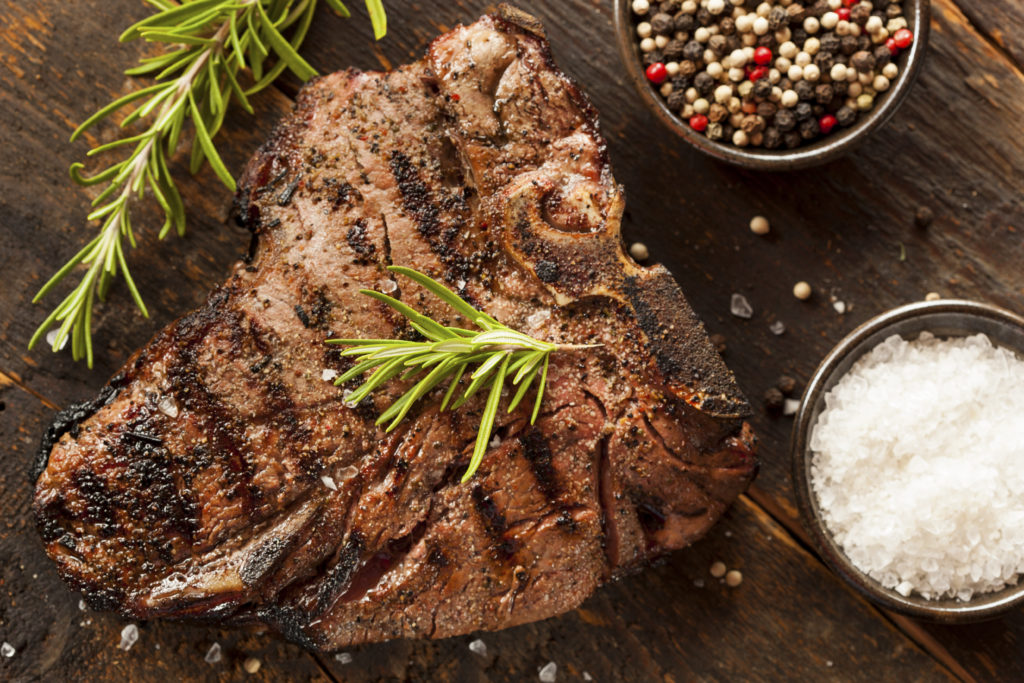
Even if you don’t want to one day open your own steakhouse, most professional chefs still have to know how to cook a proper steak. Whether T-bone or New York Strip, steak can be a food of both profound elegance and a certain heartiness. Famed food writer M.F.K. Fisher said it best when she wrote, “Most bereaved souls crave nourishment more tangible than prayers: they want a steak.” But serving the perfect steak takes time, practice and insight. Here are three handy tips to mastering the true art of steak preparation:
“The best steaks depend on the proper temperature.”
1. Focus on temperature
There is quite a lot of debate about which cuts of meat make for the best steaks. But as you’ll quickly learn during your tenure in the kitchen, a truly awesome steak is more about how you cook it, and that means ensuring the proper temperature. When it comes to how much heat to employ, chefs are split. Some opt for a hot cast-iron skillet, cooking the steak at 500 degrees Fahrenheit for five minutes. This approach is not only fast, but you’ll get a delicious medium-rare steak. Meanwhile, other chefs instead choose slow roasting in an oven at 200 degrees. With this approach, you’ll need plenty of seasoning to ensure the meat is thoroughly cooked. Even the sous vide approach has become hugely popular recent years. Here, the vacuum-sealed bag will help you control the meat’s internal temperature.
2. Use your fingers
Similar to arguments over the cut of meat, many chefs go back-and-forth regarding how well a steak should be cooked. Some prefer the flavors of medium rare, while others stand by well done as a more prime example of steak cooking. No matter where you land, you need to quickly and accurately chek doneness, and that’s where the finger test comes in. As a chef, use your finger regularly to touch the steak; with enough experience you’ll be able to tell the subtle but important difference between rare, well done and everything in between. According to Business Insider, many chefs use a proxy test that involves making a fist and touching the skin between forefinger and thumb. Fully clenched will feel like medium-well, while a half-clenched fist is akin to medium rare.
3. Be smart with the seasoning
Whereas some chefs swear by seasoning their steaks, others prefer the meat to speak for itself. Celebrity chef Tim Love definitely belongs in the former category, but as he told Food & Wine Magazine, proper seasoning involves a few essential rules. For one, you should always start by applying peanut oil. This not only helps with the seasoning process, but helps to bring out the inherent flavors of the meat. When Love seasons his meat, he gives it plenty of time to rest. In some cases, Love gives the meat at least four hours, which really helps the seasoning to settle into the meat. Finally, Love suggests that more chefs try other, non-traditional ingredients for rubs. For instance, he uses brown sugar to create a crust and seal in more flavors.


